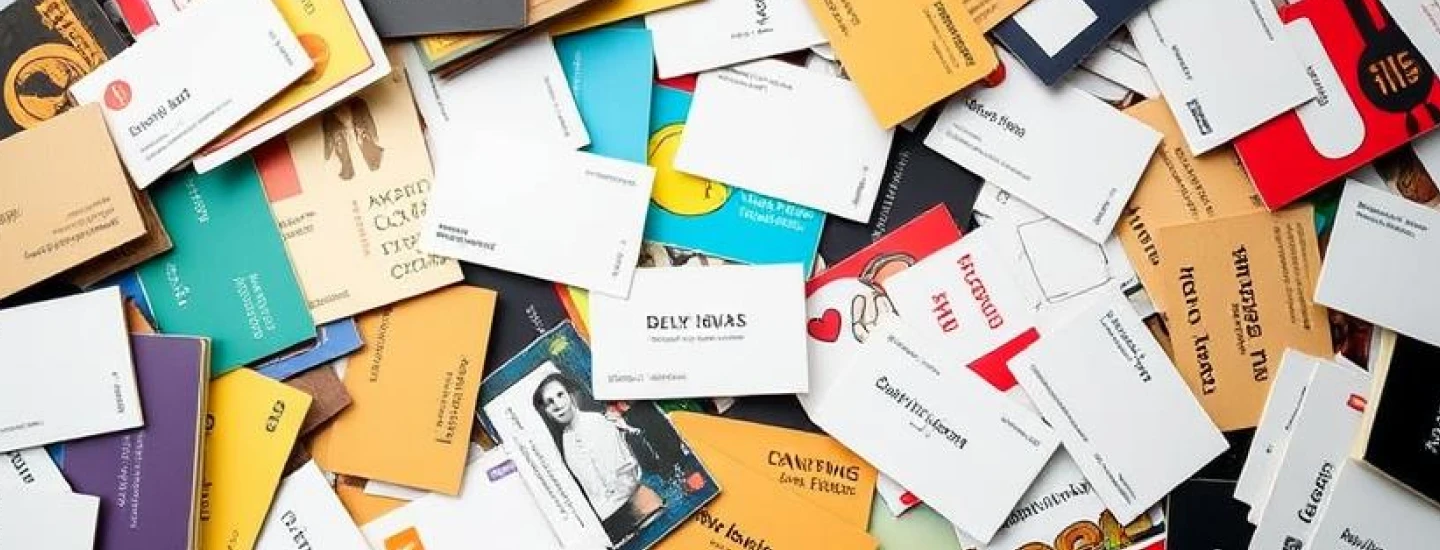

You've probably seen the headlines: "Build apps with AI in minutes!" "No code required!" "Just describe your idea and watch it appear!"
Here's what they don't tell you: Throwing an idea into Claude Code or Lovable will give you something. But that something probably won't work for anyone except you. And it definitely won't solve the actual problem you set out to fix.
The gap between "AI generated an app" and "I built a useful app" is bigger than anyone admits.
So I'm building this networking tool in public—not just to show you the end result, but to walk you through what actually goes into building an app that other people will want to use.
Because here's the truth: AI tools are incredibly powerful accelerators. But they can't replace the thinking that comes before the building.
Over the next few weeks, I'll be building this networking follow-up tool in vertical slices—one complete feature at a time. Each post will show you the full journey from idea to working demo:
For Each Feature, You'll See:
Plus the realistic stuff:
This is the 80% that AI tools don't teach you. But it's the 80% that determines whether your app actually solves a problem or just adds to the noise.
No theory-only posts. No "I'll build this eventually." Every post shows you something working.
Since starting Hite Labs, I've been going to a lot more networking events. Chamber mixers, industry conferences, local business meetups. And there's this incredible high when you're in the moment—connecting with people, discovering shared challenges, realizing "oh wow, we could really work together on that."
The conversations are energizing. Someone mentions their invoicing nightmare, and you immediately see how you could solve it. Another person describes their team's process bottlenecks, and you're already mapping out the solution in your head. You exchange cards, promise to follow up, and genuinely mean it.
Then the next day hits.
You're back at your desk, buried in the work you missed while you were out networking. The business cards are in your pocket. Your notebook has scribbled notes that made perfect sense yesterday but are cryptic now. And you think: "I need to follow up with those people. That's how I get business."
But following up properly requires:
The real cost? 30+ minutes per contact. And when you have five, ten, fifteen new contacts from an event—that's hours of work competing with everything else demanding your attention.
So some follow-ups happen quickly. Some happen eventually. And some... well, some have the best intentions but require just a little too much effort. And they never happen at all.
I was complaining about this to my wife. She was heading to a conference, and I remembered that familiar pain—the guilt of cards sitting in a drawer, connections fading, opportunities slipping away.
And I thought: "We can build an app for this."
We have all the technology we need to make this friction disappear.
You can:
That's it. The whole process happens in under 2 minutes, right there at the event or on your drive home.
No typing. No trying to remember details later. No letting connections go cold while you deal with everything else on your plate.
Four reasons I'm documenting this entire process:
When I decided I wanted to build in public, I wanted that pressure to actually finish it. Trust me, I have plenty of half-built projects in private repos that never got completed. Announcing it publicly means I have to follow through.
Most "AI app building" content shows you the sexy part (watch Claude generate code!). I want to show you the unsexy but necessary parts: problem validation, user research, wireframing, error handling, cost modeling, security considerations.
I help businesses build custom applications that people actually want to use. This is a live demonstration of that process—from identifying a real problem to shipping a solution that solves it elegantly.
You reading this article right now? That's live feedback on whether this problem resonates, whether the solution makes sense, whether this is something people actually want. If you're interested in following along, join the email list. Your input shapes what gets built.
You'll see every decision, every trade-off, every "wait, that didn't work" moment.
Here's what makes this possible with modern AI:
Traditional OCR just reads text from images. You get back a blob of words and you have to figure out what's what.
AI Vision understands context:
Claude can look at a business card photo and extract perfectly structured contact data. It knows that "VP of Operations" is a title, not a name. It knows that the thing at the bottom is probably a website URL even if it doesn't have "www" in front of it.
That distinction is huge. It's the difference between getting back usable data and getting back a mess you still have to clean up manually.
I hate typing on mobile. Especially longer thoughts about complex business conversations.
But talking? That's natural. That's easy. That's how I actually think.
Voice notes capture the nuance of conversations:
This context is gold for follow-up. And capturing it takes 30 seconds of talking instead of 5 minutes of typing.
Here's where it gets interesting:
AI can take:
And create a personalized follow-up that actually sounds like you wrote it.
Not a generic "It was nice to meet you" template. A real email that references what you discussed, positions your solution relative to their specific problem, and moves the conversation forward naturally.
I'm not following a traditional waterfall process here. Instead, I'm building in vertical slices—one complete feature at a time, from concept to working demo.
Feature 1: Image OCR - Take a photo of a business card → Get structured contact data
Feature 2: Voice Notes - Record quick context about the conversation → Capture what matters
Feature 3: Email Generation - Combine everything → Get a personalized follow-up ready to send
Feature 4: Deployment & Distribution - Get it working on my phone, then figure out how to make it available to others without blowing out my budget
Each post will show you a complete feature—from planning to working demo. Not "here's 3 weeks of wireframes," but "here's how I built image OCR and here it is working on my phone."
This is how real development happens: Iterative, imperfect, learning as you go.
You'll see the decisions, the pivots, the "wait that didn't work" moments. And most importantly—you'll see something working at the end of each post.
Here's the truth: I don't have a rigid 6-week plan. That's not how real development works, and that's not how I work.
But I do have principles I'm following:
Problem validation: Talked to business owners who network. Asked: "What makes follow-up hard?" Confirmed: This isn't just my problem.
MVP scoping: Listed every feature this could have. Ruthlessly cut to three essentials. Everything else comes later.
Think through the user experience:
Choose the right tools:
Test with reality:
Ship and learn:
Some days I'll work on UI. Some days on infrastructure. Some days I'll completely change direction because something didn't work how I expected.
That's the real process. And that's what I'll show you—not a sanitized, perfectly linear progression.
I have ideas for where this could go. But I'm not building those yet.
Batch processing: Process multiple cards at once after an event
CRM integration: Push contacts directly to ZoHo, HubSpot, Salesforce etc.
Event tracking: See which networking events produce actual business
Analytics: Learn which conversations lead to meetings
Team features: Share contacts across your team
The Cost Reality: Each contact costs roughly $0.05-0.07 to process (Claude Vision + text generation APIs)
The Options:
My Current Thinking: Build it for myself first. If it works, figure out monetization based on who else finds value in it.
The real question: Is this a product or a marketing asset? Time will tell.
Per contact processing:
At scale:
You'll see the actual costs as I build each feature. No estimates—real numbers from real API usage.
The sensitive stuff:
My approach:
The AI question: Claude doesn't train on user data, but users deserve to know their cards go through Claude's API.
Starting with web app:
Probably as PWA (Progressive Web App):
You'll see the deployment process when I actually deploy each feature. Not theory—actual URLs you can test.
Anyone could prompt Claude Code: "Build me a networking app that scans business cards and generates follow-up emails."
What you'd get:
What you wouldn't get:
That gap—between "technically works" and "actually useful"—is what this series is about.
This isn't just about business cards. It's about reducing friction between human connection and meaningful action.
The same principles apply to:
The lesson: When you combine AI capabilities (vision, voice, generation) with real user pain points and thoughtful design, you can eliminate entire categories of busywork.
But only if you do the thinking first.
Each post in this series will share:
Technical reality checks:
Development lessons:
Process insights:
Business thinking:
No theory. Just what actually happens when you build something real.
This is what I do for clients: Identify operational friction and build solutions that feel effortless to use.
Whether it's a networking follow-up tool, a client onboarding system, or an internal workflow app—the methodology is the same:
If this resonates with you—if you have operational bottlenecks eating up your time—this is exactly the kind of problem I solve for businesses.
I'm starting with Feature 1: Image OCR - turning business card photos into structured contact data.
Next post you'll see:
Then we'll tackle voice notes, then email generation. Each feature gets its own deep-dive where you see the complete journey from idea to working code.
No multi-week planning phases. No theory without practice. Just building and learning in public.
Have an idea you'd like to build but not sure where to start?
I help business owners and entrepreneurs turn operational pain points into custom applications that actually get used. Whether you want to build it yourself with guidance or have me build it for you, let's talk about what's possible.
Schedule a Free Discovery Call
I'm documenting the entire process—from problem validation to deployment. Subscribe to get weekly updates on what I'm learning, the tools I'm using, and the mistakes I'm making (so you don't have to).
I'm building this networking tool to solve my own follow-up friction. But I want to know what would make it valuable for you. Below are some questions that will help me decide the future roadmap.